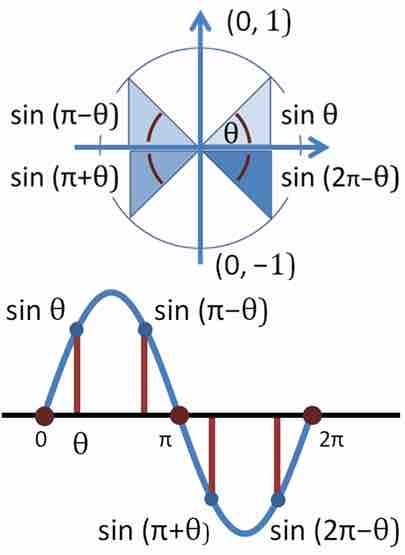A transcendental function is a function that is not algebraic. Such a function cannot be expressed as a solution of a polynomial equation whose coefficients are themselves polynomials with rational coefficients. Examples of transcendental functions include the exponential function, the logarithm, and the trigonometric functions.

Trigonometric Functions
Top panel: Trigonometric function sinθ for selected angles
Formally, an analytic function
A transcendental function is a function that "transcends" algebra in the sense that it cannot be expressed in terms of a finite sequence of the algebraic operations of addition, multiplication, power, and root extraction.
The following functions are transcendental:
Note that, for
In dimensional analysis, transcendental functions are notable because they make sense only when their argument is dimensionless (possibly after algebraic reduction). Because of this, transcendental functions can be an easy-to-spot source of dimensional errors. For example,